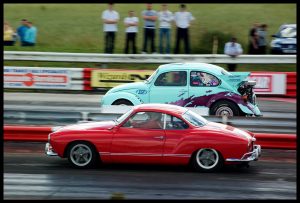
While depression is a highly debilitating condition, there is evidence that psychotherapy, most notably cognitive behavioural therapy (CBT), can be an effective treatment option. However, while CBT remains the most studied psychotherapy for depression, other therapies have also been proven effective.
One such therapy is behavioural activation (BA), an easier to implement therapy that can also be applied by mental health workers with no professional psychotherapy training and hence is potentially cheaper and more accessible.
Given that the evidence for the comparative effectiveness of CBT and BA has been limited, Richards and colleagues designed and implemented a large comparative randomised controlled trial (RCT), recently published in The Lancet (Richards et al., 2016).
The COBRA trial was a large non-inferiority RCT with the goal of establishing the efficacy and cost-effectiveness of behavioural activation (BA) compared to cognitive behavioural therapy (CBT) for depression in adults.
In brief, in a non-inferiority trial, the objective is to prove that a new or less established intervention is not worse than another established one. Read this previous Mental Elf blog if you want more detail about the differences between a superiority trial and an equivalence or non-inferiority trial.

The COBRA trial aimed to find out if behavioural activation was not inferior to CBT for treating depression.
Methods
The authors conducted a two-arm multi-centre non-inferiority RCT. The trial was registered (ISRCTN27473954) and the study protocol was published beforehand (Rhodes et al., 2014).
Patients were recruited from primary care and psychological therapy services in three UK locations (Devon, Durham, Leeds) between September 2012 and April 2014. Patients could take part in the trial if they were adults meeting criteria for a major depressive disorder (MDD) as assessed with the Structured Clinical Interview (SCID) for DSM-IV.
Exclusion criteria
Patients already receiving psychological therapy, who had drug or alcohol dependence, were acutely suicidal or had attempted suicide in the previous 2 months were excluded. Also cognitive impairment, bipolar or psychotic symptoms were reasons for exclusion.
Manualised behavioural activation and CBT
Therapies were both manualised and delivered for a maximum of 20 1-hour face to face sessions over 16 weeks, with the option of four additional booster sessions if these were requested by patients. For both CBT and BA, the manuals specified that core components were delivered by session 8, which was considered to represent a minimally sufficient dose of therapy. While CBT was delivered by professional psychotherapists, specialised in CBT, BA was delivered by junior mental health workers, with no formal psychotherapy training. Both sets of therapists received 5 days training before embarking on the study.
Outcomes
The primary outcome measure was depression severity at 12 months, measured with the Patient Health Questionnaire-9 (PHQ-9).
Secondary outcome measures were depression severity at 6 and 12 months measured with the same instrument (PHQ-9), as well as DSM-IV diagnostic status for MDD and anxiety disorder, number of depression-free days between follow-ups, anxiety (measured with a self-report scale: The Generalized Anxiety Disorder 7), and health-related quality of life at 6, 12 and respectively 18 months.
Adverse effects were defined as deaths from whatever cause and all self-harm and suicide attempts.
Statistical analysis included both modified intent-to-treat/ (mITT; all participants included in random allocation with complete date) and per protocol analyses (PP; mITT participants that received at least 8 treatment sessions). As we explained previously, a major difference between non-inferiority and superiority trials is that for the former, per protocol and not ITT analyses are more conservative. Consequently, both should be reported and non-inferiority proven for both (Christensen, 2007).
For calculating the non-inferiority margin, the authors used a previous meta-analysis comparing BA with treatment as usual (Ekers et al., 2008) and determined the non-inferiority margin as 1.9 PHQ-9 points. To conclude non-inferiority, the upper margin of the one-sided 97.5% CI (the maximum difference between groups within this 97.5% CI) had to be within the non-inferiority margin of -1.9 PHQ-9. Power calculations, using these parameters and allowing for a 20% attrition rate due to drop-outs and protocol violators, indicated a total of 440 participants would be needed.

CBT was delivered by professional psychotherapists, while BA was delivered by junior mental health workers with no formal psychotherapy training.
Results
- 440 participants were randomised:
- 221 to behavioural activation
- 219 to CBT
- Adherence to treatment was similar in the two groups (8 sessions of therapy were completed by):
- 147 patients (67%) in the BA group
- 158 (72%) in the CBT group
- Out of these, numbers assessable in PP analysis were:
- 135 patients for BA
- 151 for CBT
- In both mITT and PP samples, BA was non-inferior to CBT. For the primary outcome measure (PHQ-9 scores at 12 months) the lower bound of the one-sided 97.5% CI was -1.3 for mITT analysis and, respectively, -1.5 for BA, in both cases exceeding the non-inferiority margin of -1.9
- No differences between BA and CBT were found on any of the secondary outcomes
- The results remained similar when sensitivity analyses were conducted with missing data imputed for primary and secondary outcomes at 12 months, though the proportion of missing data was significantly higher in the BA (21%) than in the CBT group (14%)
- The inference of non-inferiority also held across sensitivity analysis for the primary outcome at 12 months stratified by baseline depression severity, use of antidepressant medication or recruitment site for both mITT and PP populations.
- Adverse effects were two non-trial related deaths (1 in the BA and 1 in the CBT group) and 15 depression-related serious adverse effects (3 in the BA and 12 in CBT group)
- Economic analyses at 18 months found a significant difference in mean intervention costs between BA and CBT, but no differences in other categories of costs or in total cost.

This well conducted RCT found that behavioural activation was non-inferior to CBT, as well as being more cost-effective.
Conclusions
The authors concluded that:
BA for depression is not inferior to CBT in terms of reduction of depression symptoms and is more cost-effective than is CBT against commonly applied decision maker willingness to pay thresholds.
Strengths and limitations
As the author note, a main strength of this trial is that it is adequately powered, being the largest trial of BA to date and one of the largest trials for psychological treatments for depression. It is also methodologically sound in aspects of design and implementation, with potential sources of bias minimised as much as possible, and transparently reported.
There are several important limitations:
- Most participants in both groups were also using antidepressants (around 80%). The authors argue most patients had been using antidepressants for a while before entering the trial, but the fact still remains that generalised antidepressant use could have contributed to levelling out differences between therapies.
- Patient with more serious depression related problems (like alcohol or drug dependence) or with acute suicide risk were excluded. This is also evident in the large number of patients that were deemed as non-eligible for the trial (312 after telephone screening and 222 after baseline interviews). As such, results may not be applicable in the population of more seriously depressed individuals, which is exactly where effective treatments are direly needed.
- Adherence to treatment was problematic and attrition was higher than what the authors anticipated. Roughly one third in both groups attended less than 8 therapy sessions, so both therapies seem equally ineffective for this sub-category.
- There is a referencing error in both the protocol and the article. The authors cite a previously published trial (Ekers et al., 2011) as basis for their calculations of the non-inferiority margin, when in fact they used a meta-analysis (Ekers et al., 2008). The problem that remains however is that this meta-analysis was based on 12 small under-powered studies (the largest trial had 43 participants per arm, half of the studies had less than 10), with moderate to high heterogeneity for depression outcomes and so the effect size estimation it produced are most likely unreliable. This also raises questions about the acceptability of the authors calculation of the non-inferiority margin.

Despite these limitations, this impressive trial provides compelling evidence that behavioural activation should be recommended by NICE as a frontline treatment for depression.
Summary
The largest head to head trial so far found behavioural activation administered by junior mental health workers with no specific psychotherapy training as not inferior to CBT, suggesting it might be an effective alternative at least for a certain segment of the depressed population.
Conflict of interest
I collaborate on a number of professional projects with one of the authors of this paper (Hollon SD). However, I had no involvement whatsoever in the study described or in the paper.
Links
Primary paper
Richards DA, Ekers D, McMillan D, Taylor RS, Byford S, Warren FC, Barrett B, Farrand PA, Gilbody S, Kuyken W, O’Mahen H, Watkins ER, Wright KA, Hollon SD, Reed N, Rhodes S, Fletcher E, Finning K. (2016) Cost and Outcome of Behavioural Activation versus Cognitive Behavioural Therapy for Depression (COBRA): a randomised, controlled, non-inferiority trial. Published Online: 22 July 2016 http://dx.doi.org/10.1016/S0140-6736(16)31140-0
Other references
Christensen E. (2007) Methodology of superiority vs. equivalence trials and non-inferiority trials. J. Hepatol. 46, 947–954. doi:10.1016/j.jhep.2007.02.015
Ekers D, Richards D, Gilbody S. (2008) A meta-analysis of randomized trials of behavioural treatment of depression. Psychol. Med. 38, 611–623. doi:10.1017/S0033291707001614
Ekers D, Richards D, McMillan D, Bland JM, Gilbody S. (2011) Behavioural activation delivered by the non-specialist: phase II randomised controlled trial. Br. J. Psychiatry J. Ment. Sci. 198, 66–72. doi:10.1192/bjp.bp.110.079111
Rhodes S, Richards DA, Ekers D, McMillan D, Byford S, Farrand PA, Gilbody S, Hollon SD, Kuyken W, Martell C, O’Mahen HA, O’Neill E, Reed N, Taylor RS, Watkins ER, Wright KA. (2014) Cost and outcome of behavioural activation versus cognitive behaviour therapy for depression (COBRA): study protocol for a randomised controlled trial. Trials 15, 29. doi:10.1186/1745-6215-15-29
Photo credits
- Paal Leveraas CC BY 2.0
- Antonio De Silva Martins CC BY 2.0
- Steven Bowler CC BY 2.0
- Joe Houghton CC BY 2.0


This is an extreme whitewash of a terrible study spun to mislead the British people. This review ignores the lack of evidence that either behavioral activation or cognitive behavioural therapy would be more effective than a lower level, nonspecific intervention to improve outcomes of a high rate of patients already being on antidepressants for quite a while. It ignores the strong violations of assumptions necessary for multivariate analyses to contend with such high rates of attrition and missing data. It ignores a designation of 12 month outcomes as primary, when many depressive episodes in primary care resolved before that without treatment. Recall it the patients were often in treatment for up to two years before the baseline assessment. Except for relapses and recurrences, most depression would be resolved.See
http://blogs.plos.org/mindthebrain/2016/08/24/a-skeptical-look-at-the-lancet-behavioural-activation-versus-cbt-for-depression-cobra-study/
for an alternative perspective
Hi Jim
Two things. One, the Mental Elf is a place where one also has to describe a study to the general public (which your lengthy blogs addressed to a different audience have the luxury not to have to do). Also space is limited (again you do not have that problem), therefore as I think is obvious, some of this gets “sacrificed” to actually present the details for the study. I think it’s unfair to just ignore these constraints. We (or at least I) are mindful of the audience here, as I don’t write blogs for myself.
Second, you probably didn’t scroll down to the extensive limitations section. In passing, I will notice we covered aspects that you did not even signal that have to do with the specific of the trial. So whitewash it is certainly not. Regarding violations of multivariate assumptions, this is a non-inferiority trial, so actually ITT analyses are less relevant (there is a whole literature on that). Thirdly, if anyone covered low intensity interventions it is the Mental Elf (see for instance yesterday’s blog).
And while we are at it, if I may, while I do agree with many of the points you raised in your blog and they are valid for discussion (an exception is the sophism about “non-inferiority trials being bad because everyone knows they are bad and hence authors must have ulterior motives”), I don’t understand why you insist on equaling them to fatal flaws. They are general problems of RCTs of psychotherapy (a field that as you know better than me is anything but great). Had the authors have made different choices (for instance recruit differently), you would have had grounds to criticize them on that. Doesn’t mean these things should not be up for debate of course, but it also doesn’t mean there is reason to immediately cry malice. That being said, please do cover all the blog (or at least the last part which is the less descriptive) before you call it an whitewash.
RT @Mental_Elf: BA not inferior to CBT for #Depression
@Zia_Julia blog https://t.co/Q3BphZpwY3
Podcast w Prof David Richards https://t.co…
Technically, Ioana is correct that there is an error on our description of the non-inferiority margin. This is just a referencing error, the text is in fact absolutely correct as we do say we used the meta-analysis (we just put the wrong citation in here). In fact, we would argue that this is not actually a limitation. Firstly, it is always better to base these things on aggregate study results than individual ones since this takes better account of study heterogeneity. Secondly, in actual fact our choice is a very ‘conservative’ one (i.e. it has made it MORE difficult for us to establish non-inferiority. There are other ways of calculating the non-inferiority margin (such as by using the standard deviation of the published minimal clinically important difference a treatment would need to demonstrate to be useful clinically) which on the PHQ-9 would have led to us selecting a larger margin (2.59). Of all the options we could have chosen, ours was the one making it harder to show non-inferiority because we had to get closer to the smaller margin. So I agree that the meta analyses trials were poor (that after all is why we did the trial!) but we chose this source of the margin as the most rigorous one for the trial. It is in fact, therefore, a strength of the trial rather than an error or limitation since the margin was much smaller (1.9 vs 2.59). I am sorry this is so technical, but in plain English what it means is that we set ourselves a harder target so that we could not falsely claim BA was not-inferior to CBT.
We were unable to explain all this in the paper due to word limit restrictions but it will be fully explained in the forthcoming report and is in fact why we talk about conservative margin choice in the paper.
Thanks for this clarification Dave.
We have amended Ioana’s blog so that the final bullet point in the limitations section now reads: “There is a referencing error in both the protocol and the article”.
Cheers, André
Hi
I asked Andre to amend that (he has) and while I did mean a referencing error, it is certainly not the equivalent of a typo. It took me quite some time to understand what you meant, the meta-analysis was not cited (and it’s not the only one on BA anyway), also this is after all the Lancet.
Next about the calculation of the non-inferiority margins. I did check out the simulation computation in the protocol and while I don’t have the competence for the actual calculations, it is obvious you chose the most conservative one out of those. But the fact remains it was based on an effect size (ES) estimation from a meta-analysis (MA) of small underpowered trials. At best, this just means that the ES estimation is unstable. At worst, it could also mean the ES from this MA is in fact inflated. In any case, it means that a large trial could significantly topple results.There is of course no way out of this, this is how meta-analyses are, this is what the literature was. It is also true that an update of this MA in 2014 led to similar estimations of an ES of 0.7 (though it was based on largely the same trials). That being said, I think in the interest of transparency and objectivity, it is fair to raise this problem. I was not saying you could have done better, not that you did not choose the most conservative computational method.
That’s fine thanks. Ironically, had we chosen the published PHQ-9 data to estimate the non-inferiority margin would have been on more ‘stable’ empirical ground but from our perspective open to more criticism that we had not provided a sufficiently rigorous test of non-inferiority. We are happy with our choice which is one of the many one has to make in real life clinical research when designing trials.
I am not critical of your choice at all. But there is an elephant in the room about the quality & reliability of BA trials (I mean previous ones). I think the MAs make this very clear. I am not saying other therapies are doing better, but it is a point to make. If I may though, I am curious why you did not go for equivalence?
Behavioural activation not inferior to CBT for depression: the COBRA RCT https://t.co/dHWXwJg9WZ via @sharethis
RT @Mental_Elf: Major new depression RCT:
Behavioural activation not inferior to CBT
BA more cost-effective
https://t.co/tSuNDHQzPV https:/…
Should @NICEcomms now recommend
#BehaviouralActivation as frontline #Depression therapy?
https://t.co/Q3BphZpwY3 https://t.co/wbrZNpMczY
@Mental_Elf we’ve just started to update our depression guideline and will review all new relevant evidence: https://t.co/5EFV4WYqAe
Don’t miss:
#BehaviouralActivation not inferior to #CBT for #depression
#COBRA RCT
https://t.co/Q3BphZpwY3 https://t.co/ppHZs71by9
“Behavioural activation not inferior to CBT for depression: the COBRA RCT https://t.co/WLe5XnuaOP
RT @JaneTuxworth: OTs won’t be surprised..?
Behavioural activation not inferior to CBT for depression: the COBRA RCT https://t.co/l8NwBzkvJT
RT @Mental_Elf: Today @Zia_Julia on Cost and Outcome of Behavioural Activation vs CBT for Depression https://t.co/Q3BphZpwY3 #COBRA @TheLan…
[…] trained CBT practitioner to persuade and arrange for someone to take up again a dormant hobby. This study compared the effectiveness of CBT with behavioural activation delivered by mental health workers […]
Behavioural activation not inferior to CBT for depression: the COBRA RCT https://t.co/MfmsRVBCJf via @Mental_Elf
Behavioural activation not inferior to CBT for depression: the COBRA RCT https://t.co/Vw30S9Go53
[…] Read the accompanying blog: Behavioural activation not inferior to CBT for depression: the COBRA RCT. […]
[…] Read the accompanying blog: Behavioural activation not inferior to CBT for depression: the COBRA RCT. […]